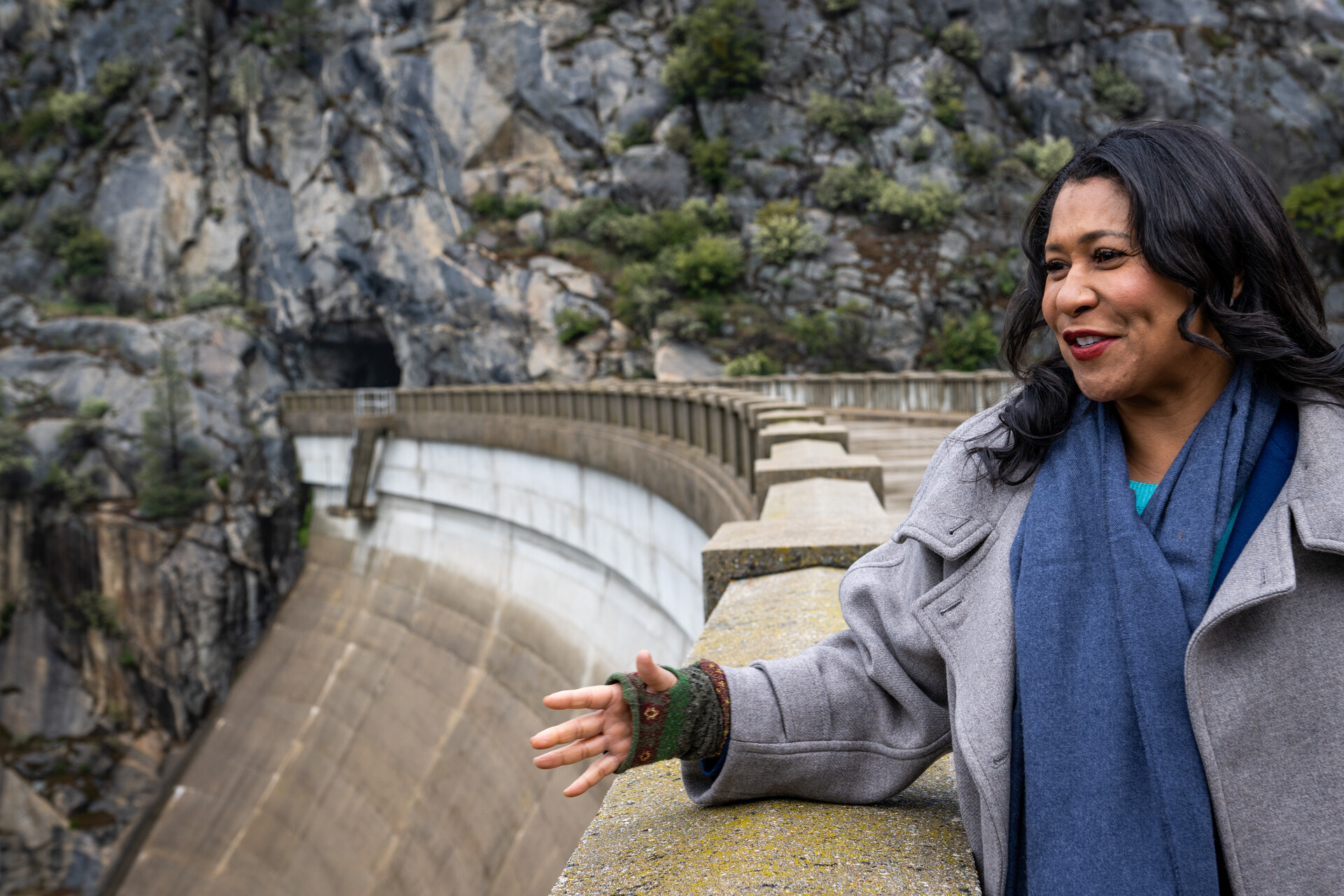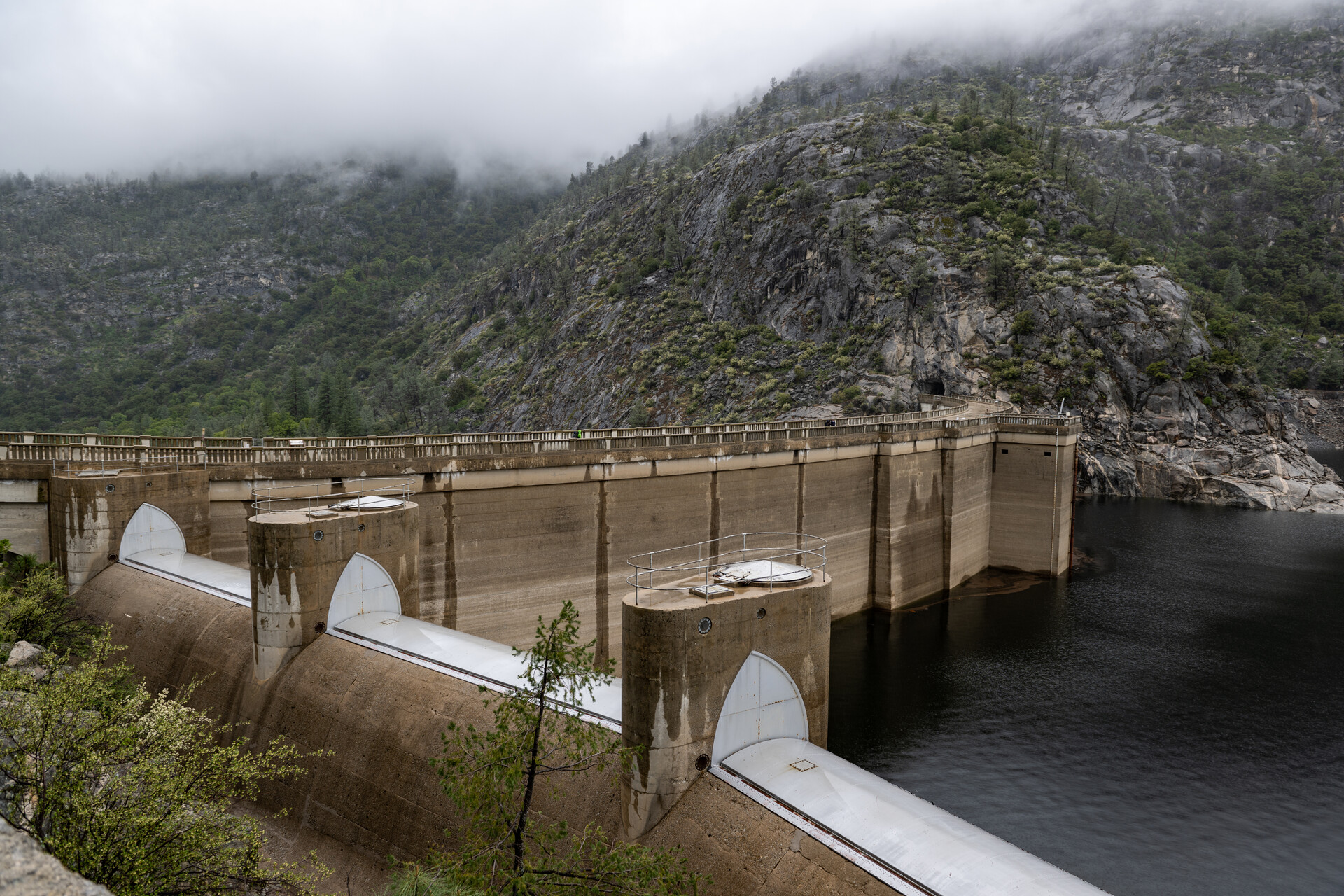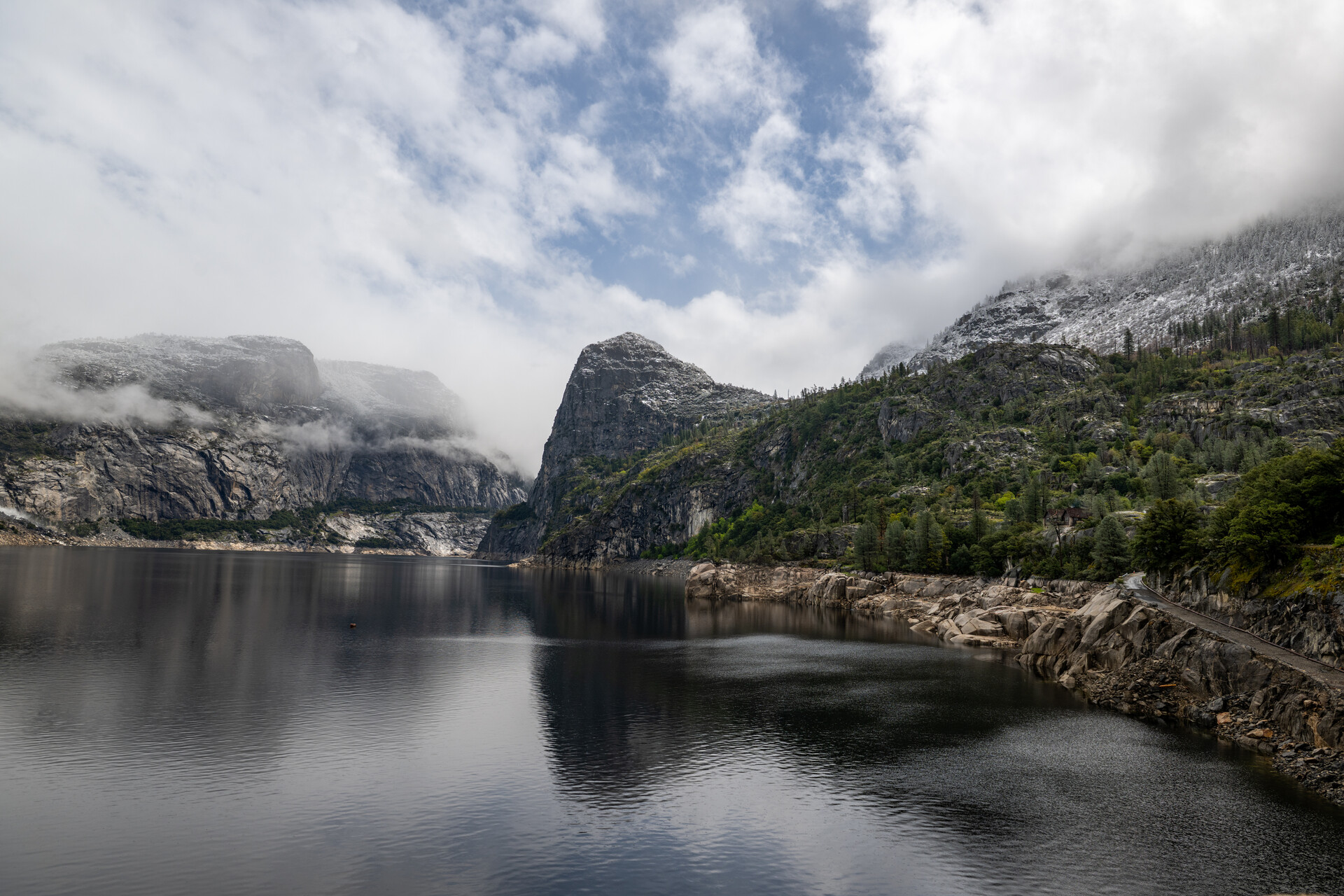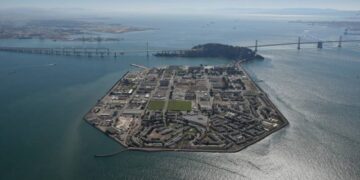But water experts believe the next 100 years of supplying a finite resource to millions of people will be much more complicated than storing water in a mountain bathtub and piping it to the bay. Water officials will need to conserve more and might need to make engineering upgrades so that the system can store more water.
The Hetch Hetchy system has been able to handle recent severe droughts and this winter’s powerful storms, but Newsha Ajami, the president of the SFPUC, said “part of that has been driven by luck.”
“We have some of the lowest water use in the state,” she said. “San Franciscans use about 40 gallons per person daily, which is very low.”
The SFPUC operates the reservoir and expects the Hetch Hetchy system will be tested by even more extreme drought and deluge.
“This year was one of the wettest years we’ve ever seen. Right before we had the driest three-year sequence we had ever seen,” said Graham. “We are seeing what the climate change models are forecasting, wetter wet periods and drier dry periods, which makes managing all this quite a bit more difficult.”
The water supply may seem stable in a wet year, Graham said, but managing the runoff from a massive Sierra snowpack takes constant attention, especially with no guarantee future years will also be wet. Come August, he said, the reservoir will remain glassy and brimming.
“For now, all I’m trying to do is maximize what we got and the storage capacity we have,” he said. “Climate change is going to make managing this water supply much more difficult.”
 San Francisco Mayor London Breed looks out from the O’Shaughnessy Dam at the Hetch Hetchy Reservoir during Tuesday’s centennial celebration. (Beth LaBerge/KQED)
San Francisco Mayor London Breed looks out from the O’Shaughnessy Dam at the Hetch Hetchy Reservoir during Tuesday’s centennial celebration. (Beth LaBerge/KQED)
While San Franciscans don’t use much water, other parts of the Bay Area overuse the resource. Laura Feinstein with the non-profit public policy group SPUR analyzed water use within the system and found that communities like Hillsborough in San Mateo County that receive water from the Hetch Hetchy system use 190 gallons of water per person per day.
“They use water generously even in the winter when it rains,” she said of residents who continue to water large yards and landscapes regardless of season. “Those types of inefficiencies put a lot of pressure on the system. Making communities like that more water-efficient would mean a lot of savings and make the whole system more climate resilient.”
Hetch Hetchy’s success will depend on rethinking its use
Susan Leal wants to ensure that Hetch Hetchy exists as a thriving water resource in the face of human-caused climate change. She is a former general manager of the SFPUC.
She sees three possibilities for the future of water originating from Hetch Hetchy: it will become more expensive over time, officials begin to recycle it on a large scale or they raise the reservoir level.
Regarding recycling water, Leal said there is “no alternative,” and city officials must give serious thought this year to creating more recycled water plants. Recycled water, she said, costs more but could relieve pressure on the system.
“To get people off bottled water, we kept telling them how good their Hetch Hetchy water is,” she said. “We have to let people understand that recycled water is like distilled water. It’s very pure water.”
 The O’Shaughnessy Dam holds back the Tuolumne River, forming Hetch Hetchy Reservoir in Yosemite National Park. (Beth LaBerge/KQED)
The O’Shaughnessy Dam holds back the Tuolumne River, forming Hetch Hetchy Reservoir in Yosemite National Park. (Beth LaBerge/KQED)
Another option for increasing the water supply is to raise the dam to hold more water. In 1938, officials raised it from 227 feet to 312 feet. Leal said O’Shaughnessy Dam, which holds back the Tuolumne River, could be built 55 feet taller than its height today.
“We may need to build the dam higher to impound more water,” she said. “We have to consider this because we never planned for the extreme storms.”
Raising the dam and increasing the holding capacity of the reservoir would likely come with substantial pushback from environmentalists and would likely be tied up with lawsuits.
“I don’t know if it’s being considered, but whether it’s recycling or impounding more water at Hetch Hetchy or other dams, all these things you have to start thinking about yesterday,” she said.
100 years marks the ‘sacrifice of the environment’
The story of Hetch Hetchy isn’t all about free flowing, pure drinking water, and its construction kicked off one of the first major U.S. fights over land use and conservation. When officials constructed Hetch Hetchy, the reservoir cut off waterways to the fish, flora and other fauna that relied on flowing water that is now largely stored behind a cement wall deep in the Sierra Nevada.
UC Davis’ Sandoval Solis said the building of the reservoir, while good for many people in the Bay Area, has devastated riparian freshwater ecosystems.
“The environment has been compromised already for 100 years,” said Sandoval Solis. “The centennial also marks the centennial of the compromise of the environment or the sacrifice of the environment, and some of the native communities displaced for the sake of the well-being of people living in San Francisco.”
Hetch Hetchy is the ancient homeland of as many as a dozen Indigenous peoples; across Yosemite many were forcibly removed or killed in the mid-1800s.
 The Hetch Hetchy Valley has been inundated with water since the construction of the O’Shaughnessy Dam 100 years ago. (Beth LaBerge/KQED)
The Hetch Hetchy Valley has been inundated with water since the construction of the O’Shaughnessy Dam 100 years ago. (Beth LaBerge/KQED)
Damming rivers across the Sierra Nevada, like the Tuolumne River at Hetch Hetchy, have ramifications on the river systems that unite in the San Joaquin River, flow into the San Joaquin-Sacramento Delta and push into the bay.
The large amounts of freshwater that once flowed helped mix natural algae into the salty water. Still, lesser flows into the bay mean the algae sits on top of the water, creating the perfect habitat for toxic algae blooms. Olivia Yip, an associate professor at San Jose State University who studied algae blooms, said the last outbreak that killed thousands of fish was partly due to decreased freshwater flows.
“Imagine a little algae floating around in the bay,” said Yip. “If there’s more mixing, then it’s less likely that it can just sit there on the top and grow like crazy.”
The future of the system must include equitable use of water, say advocates
The Hetch Hetchy pipeline runs through communities that need clean drinking water themselves in the Central Valley and the Bay Area. UC Davis’ Sandoval Solis said access to clean drinking water should “not be a luxury because it is a human right.”
“The pipes are passing through the middle of their communities, but they cannot use it,” he said. “I don’t think there should be a problem with providing clean water to disadvantaged communities.”
Around two-thirds of the pure Hetch Hetchy water in the Bay Area is used outside San Francisco’s bounds.




















